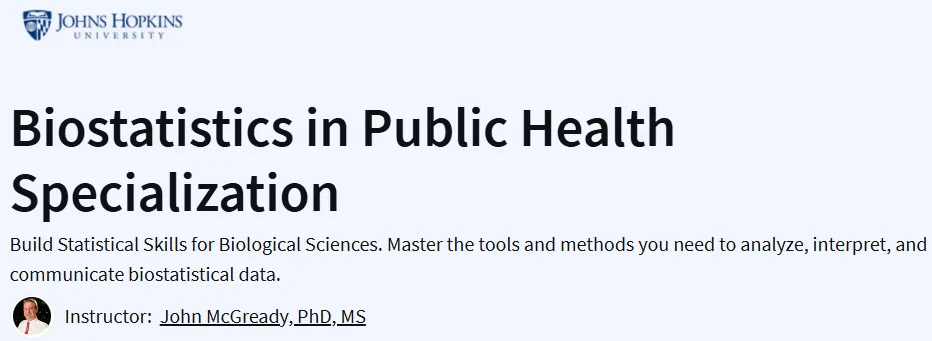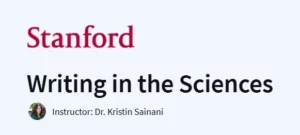What you will learn in Biostatistics in Public Health Specialization Course
Calculate summary statistics from public health and biomedical data.
Interpret written and visual presentations of statistical data.
- Evaluate and interpret results of various regression methods.
- Choose the most appropriate statistical method to answer your research question.
Program Overview
Summary Statistics in Public Health
⏱️15 hours
Calculate continuous data measures.
Interpret data visualizations.
Analyze binary data.
Analyze time-to-event data.
Hypothesis Testing in Public Health
⏱️19 hours
Use statistical methods to analyze sampling distributions.
Estimate and interpret 95% confidence intervals for single samples and two populations.
Estimate and interpret p-values for hypothesis testing.
Simple Regression Analysis in Public Health
⏱️ 15 hours
Practice simple regression methods to determine relationships between an outcome and a predictor.
Recognize confounding in statistical analysis.
Perform estimate adjustments.
Multiple Regression Analysis in Public Health
⏱️14 hours
Practice multiple regression methods to determine relationships between an outcome and multiple predictors.
Use the spline approach for non-linear relationships with continuous predictors.
Perform calculations with multiple predictor variables.
Get certificate
Job Outlook
Professionals trained in biostatistics are in demand across various fields, including public health, healthcare, and research. Key skills include:
Knowledge of statistical methods and their application in public health.
Ability to analyze and interpret biomedical data.
Proficiency in statistical software and data visualization tools.
Specification: Biostatistics in Public Health Specialization
|





